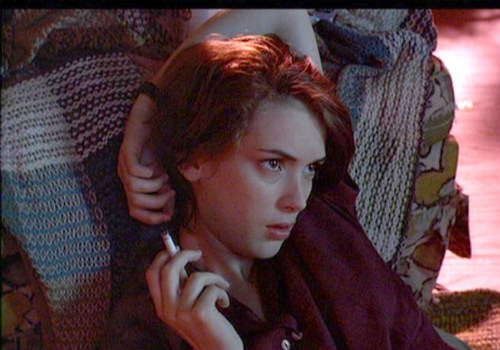Last December I reported on a student, Emily Rosen, writing her senior project on the female coming-of-age story or Bildungsroman. It’s a project that begins with J. D. Salinger’s Franny and concludes with Lena Dunham’s Hannah in the HBO miniseries Girls. Emily is focusing on the transition from college to the work world, an issue that obviously means a lot to her at the moment. (Many of my women students are Dunham fans.) The ideas I noted in December’s blog post are all still in play but Emily has further refined her thoughts on coming-of-age stories.
Emily says that it’s useful to think of genre as a story form that people use to give their lives meaning. In the 1950s, Jane Austen-style courtship romances still worked for many women. It’s not surprising that, with society insisting that women find a man and become stay-at-home moms, the Harlequin romance would come into its own. However, the courtship story didn’t work for women like Salinger’s Franny, and in her we see what happens when we don’t have access to a story that articulates our experiences. Ambivalent about marriage yet seeing no options for a woman like her in the workplace, Franny has a mental breakdown.
By the 1970s, feminists interested in careers were wondering whether they could simply replace the courtship novel with the Bildungsroman, which had been around since the Tom Jones (and even earlier if one wants to see Shakespeare’s Henry IV plays as coming-of-age stories). Other Bildungsroman include Goethe’s Wilhelm Meister’s Apprenticeship and Dickens’ Great Expectations and David Copperfield. Some feminists thought that it was just a matter of switching the gender of the protagonist.
Emily notes that it proved not to be so easy. For one thing, men saw relationships differently than women did. When women show up early in a traditional male coming-of-age story, she is often a distraction (the temptress figure). The story wants her to delay her entry until after the protagonist has arrived and is ready to begin propagating his line.
It doesn’t work that way in female coming-of-age stories since relationships are often seen as important as careers, with the two jostling for primacy.
As a result, authors and literary scholars came up with the “female Bildungsroman,” which was a variation of the male version. Even though the male Bildungsroman often proceeded in fits and starts, compared to the female Bildungsroman it looked like a straight ladder. Women’s coming-of-age stories often careened between career and relationships, with sometimes the one taking precedence, sometimes the other, sometimes the two locked in a precarious balancing act. This drama could last late into the thirties, with extra tension added thanks to the biological clock.
Although this can lead to apparent formal chaos, it also leads to a real dynamism. There’s no sense of having arrived as there is, say, at the end of David Copperfield, because there are always tensions to be resolved. Frustrating though this may be for women, it is gold for authors, who thrive on unsettled situations. In certain ways, a television series may do more justice to the open-ended process than does a novel, which has to wrap things up (or at least point to an ambiguous future, which is the case in Jeffrey Eugenides’ The Marriage Plot).
Through all this, Emily has discovered that she has one important advantage over Franny. While she may be experiencing similar anxieties, at least she has a genre that helps her sort things out.


